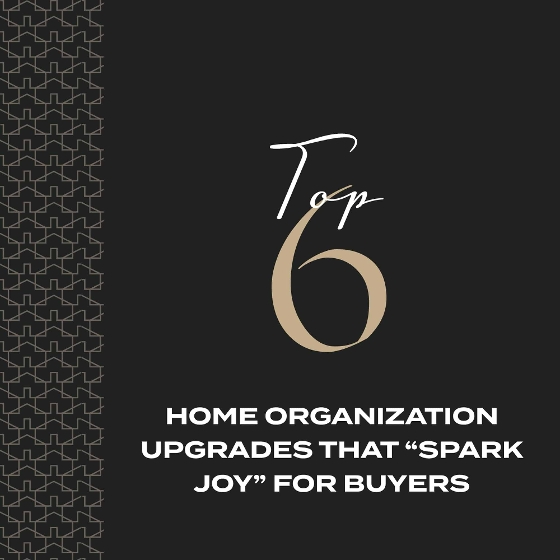Now, more than ever, there is an abundance of opportunities for real estate investors. But which path is best: leasing your property to a long-term tenant or renting your property to travellers on a short-term basis?
WHY INVEST IN A RENTAL PROPERTY?
The Top 5 Reasons
Before we delve into the differences between long-term and short-term rentals, let’s answer the question: “Why invest in a rental property at all?”
There are five key reasons investors choose real estate over other investment vehicles:
1. Appreciation is the increase in your property’s value over time. And history has proven that the cost of real estate continues to rise over an extended period. Recessions may still occur, but in the vast majority of markets, the value of real estate does grow over the long term.
2. Cash Flow: One of the key benefits of investing in real estate is the ability to generate steady cash flow. Rental income can be used to pay the mortgage and taxes on your investment property, as well as regular maintenance and repairs. If appropriately priced in a solid rental market, there may even be a little extra cash each month to help with your living expenses or to grow your savings. Even if you only take in enough rent to cover your expenses, a rental property purchase will pay for itself over time. As you pay down the mortgage monthly with your rental income, your equity will continue to increase until you own the property free and clear. This leaves you with residual cash flow for years to come.
3. Hedge Against Inflation: Inflation is the rate at which the general cost of goods and services rises. That means as inflation rises, the money you have sitting in a savings account will buy less tomorrow than it will today. On the other hand, real estate prices typically match (or often exceed) the inflation rate. To hedge or guard yourself against inflation, real estate can be a wise investment choice.
4. Leverage: Leverage is the use of borrowed capital to increase the potential return of an investment. You can put a relatively small amount down on a property, finance the rest of the investment with a mortgage, and then profit on the combined value.
5. Tax Benefits: Don’t overlook the tax benefits that can come with a real estate investment. There are many ways a real estate investment can save you money on taxes, from deductions to depreciation to exemptions. Consult a tax professional to discuss your particular circumstances.
LONG-TERM (TRADITIONAL) RENTAL MARKET
When most people think of owning a rental property, they imagine buying a home and renting it out to tenants to use as their primary residence. Traditionally, investors would use their rental property to generate an additional income stream while benefiting from the property’s long-term appreciation in value.
In fact, that steady and predictable monthly cash flow is one of the key advantages of owning a long-term rental. And as an owner, you don’t usually have to worry about paying the utility bills or furnishing the property—both of which are typically covered by the tenant. Add to this the fact that traditional tenants translate into less time and effort spent on day-to-day property management, and long-term rentals are an attractive option for many investors.
However, long-term rentals also have limitations, which often come down to your ability to control the property. Perhaps the most obvious one is that you do not get to use the home or closely monitor its upkeep (this is different from a short-term rental, which we’ll share in the next section).
In addition, while you can usually generate a steady, predictable income stream with a long-term rental, you are limited in adjusting rent prices based on increasing or seasonal demand. Therefore, you may end up with a lower overall return on your investment. In fact, according to data from Mashvisor, in the ten hottest real estate markets, short-term rentals produced “significantly higher rental income” than long-term rentals.
SHORT-TERM (VACATION) RENTAL MARKET
Short-term rentals are often referred to as vacation rentals, as more and more travellers enjoy the benefits of staying in a home while on vacation. In fact, according to Wells Fargo, vacation rentals are steadily growing and are predicted to account for 21% of the worldwide accommodations market by 2020.
Investing in a short-term rental or funding your second-home purchase by renting it out can offer many benefits. Suppose you purchase an investment property in a top travel destination or vacation spot. In that case, you can expect steady demand from travellers while taking advantage of non-rented periods to enjoy the home. In addition to greater control over how your property is used, you can also adjust your rental price around peak travel demand to maximize your returns.
But short-term rentals also have risks and drawbacks that may dissuade some investors. They require more significant day-to-day property management, and owners are typically responsible for furnishing the property, upkeep, and utilities.
And while rental revenue can be higher, it can also be less predictable based on seasonal or consumer travel trends. For example, a lack of snowfall during ski season could mean fewer bookings and lower rental revenue that year.
In addition, laws and limitations on short-term rentals can vary by region. And in some areas, the regulations are in flux as residents and government officials adapt to a new surge in short-term rentals. So make sure you understand any existing or proposed restrictions on rentals in the area where you want to invest.
Urban centers or suburban communities may be more resistant to short-term renters, thus more likely to pass future limitations on use. To lower your risk, you may want to consider properties in resort communities that are accustomed to travellers. We can help you assess the current regulations on short-term rentals in our area. Or, if you’re interested in investing in another market, we can refer you to a local agent who can help.
WHICH INVESTMENT STRATEGY IS RIGHT FOR YOU?
Now that you understand these two real estate investment options, how do you pick the right one for you? It’s helpful to start by clarifying your investment goals.
If your goal is to generate a steady, predictable income with less time and effort spent on property management, then a long-term rental may be your best option. Also, if you prefer a less-risky investment with more reliable (but possibly lower) returns, you may be more comfortable with a long-term rental.
On the other hand, if your goal is to purchase a vacation or second home that you’ll use, and you want to defray some (or all) of the expense, then a short-term rental may be a good option for you. Similarly, suppose you’re open to taking on more risk and revenue volatility for the possibility of greater investment returns. In that case, a short-term rental may better suit your spirit as an investor.
But sometimes the decision isn’t always so clear-cut. If your goal is to purchase a future retirement home now to hedge against inflation, rising real estate prices, and interest rates, then both long- and short-term rentals could be suitable options. In this case, you’ll want to consider other factors like location, market demand, property type, and your risk tolerance.
HERE OR ELSEWHERE … WE CAN HELP
If you’re looking to make a real estate investment—whether it’s a primary residence, investment property, vacation home, or future retirement home—give us a call. We’ll help you determine the best course of action and share insights and resources to help you make an informed decision. And if your plans include buying outside our area, we can refer you to a local agent who can help. Contact us to schedule a free consultation!













